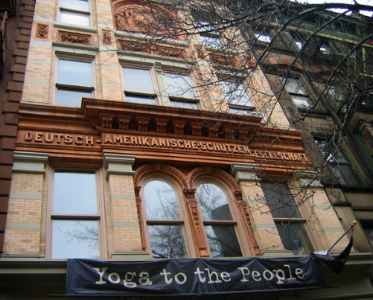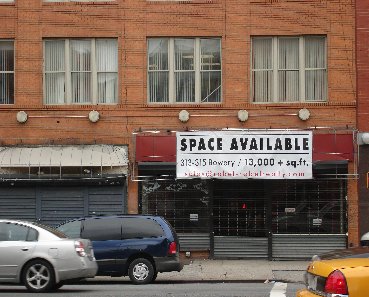East Village- What's Real
From Decoding New York
| Introduction |
| The East Village |
| * Evolution |
| * Here v. There |
| * Economy |
| * What's Real |
| Bay Ridge |
| * Evolution |
| * Here v. There |
| * Economy |
| * What's Real |
| Comparison |
| * Photo Gallery |
| * Sources
|
To outsiders, this neighborhood is no longer Dutch Town or the Lower East Side. The East Village has earned a name for itself as an arty, edgy area, a countercultural hot spot. This image is epitomized by the stretch of East Eighth Street between Astor Place and Avenue A lined with tattoo parlors, record stores, and bars. St. Mark’s Place, became a focal point of the more intellectual, arty counterculture. Number 4 St. Mark’s Place, now a clothing store, used to be the Bridge Theater, where Yoko Ono and other artists held happenings. Up the street is the site of the Electric Circus, which featured such artists as Jimi Hendrix and the Velvet Underground; prior to this, the buildings served as the Polish National Home, and prior to that, they were Arlington Hall, a German music hall and the site of a turf battle between the Jewish and Italian mobs. Number 51 St. Mark's used to house 51X, a gallery that displayed work by the likes of Keith Haring and Jean-Michel Basquiat. Many significant figures lived in the area, including poet Wystan Hugh Auden, comedian Lenny Bruce, author James Fennimore Cooper, painter Joan Mitchell, and Russian revolutionary Leon Trotsky.
It would be an exaggeration to claim that this side of the neighborhood has been lost to gentrification, but the effects of rising trendiness and real estate prices are certainly evident. CBGB’s, the club that was for decades an underground and punk rock icon, has closed; all that remains is the retail store on St. Mark’s. Nearby East Second Street, between Second Avenue and the Bowery, is now Joey Ramone Place. The East Village, essentially, is gradually becoming something of a countercultural theme park, consciously playing to the image that has been created around it. 1996 saw the debut of the musical Rent, which portrayed an arty, avant-garde East Village, albeit drug-ridden and plagued with AIDs/HIV. Inhabitants are quite aware of the increasing gentrification, and there is something of a movement to preserve the “real” East Village. The website east-village.compresents a generally arty image, focusing on eccentric local characters, poetry, music, performance art, and the like. There are "Save the East Village” T-shirts for sale online. It’s too early to tell precisely how these trends will affect the neighborhood. It is somewhat ironic that this sort of consciousness of one image of the East Village – a relatively recent one at that – is a driving force of both gentrification and the movement to resist it. In contrast, in the greatest concentration of a single ethnic group in the neighborhood – the Hispanic population centered in the southeastern area – the spirit of the earlier Lower East Side carries on. This is simply a place to live, where all the necessary infrastructure of a largely working-class ethnic community can be found, where work is accessible, where rent is affordable- for now.

